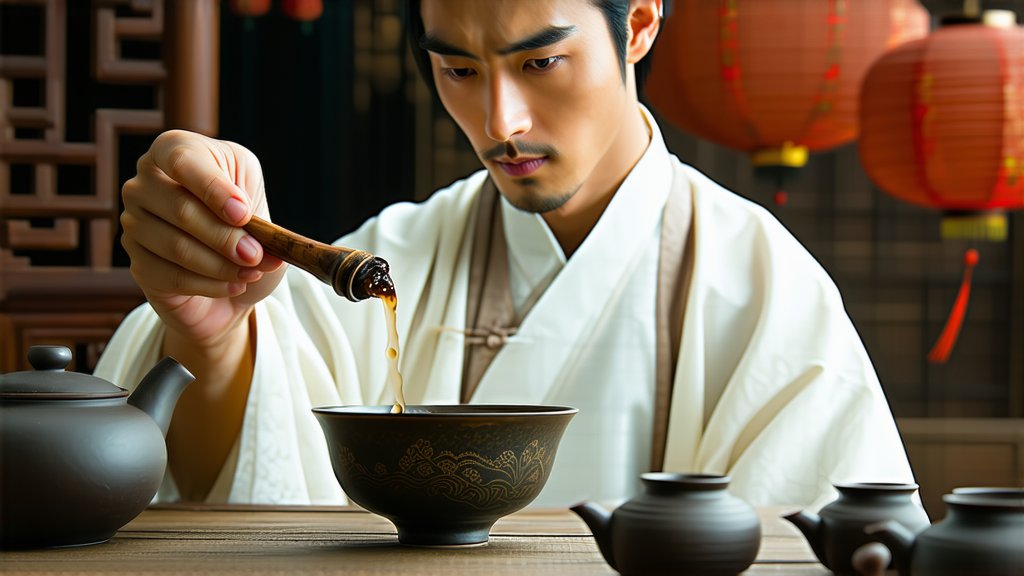
In the vast and diverse world of Chinese teas, few varieties captivate the senses and intrigue the palate quite like Pu-erh. Originating from the ancient tea forests of Yunnan Province in China, Pu-erh is not just a beverage; it's a cultural emblem steeped in history, tradition, and an intricate production process that distinguishes it from other teas. This article delves into the depths of Pu-erh, exploring its historical roots, varieties, meticulous manufacturing techniques, optimal brewing methods, and the art of tasting this unique dark tea.
A Glimpse into History
Pu-erh tea's origins trace back to the Tang Dynasty (618-907 AD), with its name derived from the ancient trading post of Pu'er, where the tea was once traded. It gained significant prominence during the Ming Dynasty (1368-1644) when it became a tribute tea offered to the Chinese emperor. Over centuries, Pu-erh evolved, developing distinctive characteristics that set it apart in the pantheon of teas. Its journey from a local specialty to international acclaim is a testament to its complexity and depth.
Varieties of Pu-erh
Pu-erh comes in two primary forms: Raw (Sheng) Pu-erh and Ripe (Shou) Pu-erh.
- Raw Pu-erh undergoes natural fermentation over time, aging gracefully and developing a robust, earthy flavor profile. It's typically darker in color, with a more complex taste that improves with age, much like fine wine.
- Ripe Pu-erh, on the other hand, undergoes an accelerated fermentation process using beneficial microbes, resulting in a smoother, mellower flavor with hints of wood, chocolate, and sometimes even a subtle mustiness. This type is ready to drink soon after production.
The Art of Making Pu-erh
The craftsmanship involved in producing Pu-erh is a delicate balance between nature and human intervention. Here's a simplified overview:
- Picking: Only the finest buds and leaves are handpicked, usually from old-growth tea trees.
- Withering: The plucked leaves are spread out to wither under the sun or in a well-ventilated area, reducing moisture content.
- Fixation: The withered leaves are briefly heated to halt oxidation, preserving their natural enzymes.
- Rolling: Leaves are rolled to express their essential oils and shape them into various forms, such as bricks, cakes, or loose leaf.
- Fermentation: For Raw Pu-erh, this is a natural aging process that can last several years. Ripe Pu-erh undergoes a controlled fermentation process involving pile-fermentation, where the leaves are stacked and regularly turned to promote even microbial growth.
- Drying: After fermentation, the leaves are dried thoroughly to stabilize them for long-term storage.
- Aging: Both types continue to age, with Raw Pu-erh developing deeper flavors over decades while Ripe Pu-erh mellows and softens.
Brewing the Perfect Cup
To fully appreciate Pu-erh, proper brewing is essential. Here's a guide to coaxing out its best flavors:
- Water Temperature: Use boiling water (around 212°F/100°C) for both Raw and Ripe Pu-erh.
- Tea Quantity: A general ratio is 5 grams of tea per 100ml of water. Adjust according to personal preference.
- Warming the Pot: Warm the teapot and cups with hot water before use.
- Steeping: Rinse the tea leaves with boiling water for a few seconds to cleanse them, then discard the liquid. This 'rinse' also helps open up the leaves.
- Infusion Time: For the first infusion, steep for about 15-30 seconds. Subsequent infusions can be longer, increasing by 5-10 seconds each time. Raw Pu-erh may require shorter initial steeps due to its stronger flavor.
- Multiple Infusions: One of Pu-erh's delights is its ability to be infused multiple times, each revealing different nuances of flavor.
Savoring the Experience
Tasting Pu-erh is an art form that engages all the senses:
- Appearance: Observe the color of the brewed tea. Raw Pu-erh often yields a bright amber hue, while Ripe Pu-erh tends towards reddish-brown.
- Aroma: Inhale deeply to detect earthy, woody, or even fruity notes in Raw Pu-erh, and a sweeter, more humid scent in Ripe Pu-erh.
- Taste: Sip slowly, allowing the tea to coat your palate. Note the initial bitterness that gives way to a lingering sweetness or umami in high-quality Pu-erh.
- Mouthfeel: Pay attention to the texture; it should be smooth yet full-bodied.
- Aftertaste: A good indicator of quality is a clean, pleasant aftertaste that lingers without being harsh.
In conclusion, Pu-erh is more than just a tea; it's a living testament to China's rich cultural heritage and mastery of tea cultivation. Each sip offers a journey through time, connecting modern connoisseurs with centuries-old traditions. Whether you're a seasoned tea aficionado or new to the world of dark teas, exploring Pu-erh is an adventure worth embarking upon.